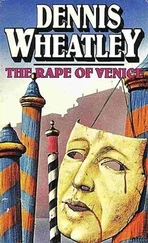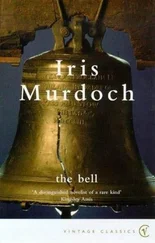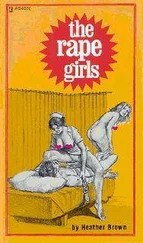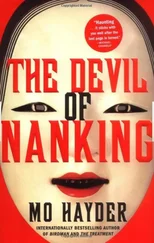They all walked in droves, like ants crawling on the ground. They looked like a bunch of homeless people, with ignorant expressions on their faces.
A herd of ignorant sheep, with no rule or order, marched on in the darkness, whispering to each other.
They hardly looked like the enemy who only yesterday was shooting at and troubling us. It was impossible to believe that they were the enemy soldiers.
It felt quite foolish to think we had been fighting to the death against these ignorant slaves. And some of them were even twelve- or thirteen-year-old boys.
The Japanese led the prisoners to a nearby village. Azuma recalled that when some of the Chinese were herded into a large house, they hesitated to enter, looking upon the place as if it were “a slaughter house.” But finally they gave in and filed through the gate. Some of the prisoners struggled with the Japanese only when the latter tried to take away their blankets and bedding. The next morning Azuma and his comrades received an order to patrol another area; they later learned that while they were on patrol the Chinese prisoners had been assigned to companies in groups of two to three hundred, then killed.
Probably the single largest mass execution of prisoners of war during the Rape of Nanking took place near Mufu Mountain. The mountain lay directly north of Nanking, between the city and the south bank of the Yangtze River; an estimated fifty-seven thousand civilians and former soldiers were executed.
The killing proceeded in stealth and in stages. On December 16, the Asahi Shimbun newspaper correspondent Yokoto reported that the Japanese had captured 14,777 soldiers near the artillery forts of Wulong Mountain and Mufu Mountain and that the sheer number of the prisoners posed problems. “The [Japanese] army encountered great difficulties since this was the first time that such a huge number of POWs were captured,” Yokoto wrote. “There were not enough men to handle them.”
According to Kurihara Riichi, a former Japanese army corporal who kept diaries and notes of the event, the Japanese disarmed thousands of prisoners, stripped them of everything but their clothes and blankets, and escorted them to a row of straw-roofed temporary buildings. When the Japanese military received orders on December 17 to kill the prisoners, they proceeded with extra caution. That morning the Japanese announced that they were going to transport the Chinese prisoners to Baguazhou, a small island in the middle of the Yangtze River. They explained to the captives that they needed to take special precautions for the move and bound the captives’ hands behind their backs—a task that took all morning and most of the afternoon.
Sometime between 4:00 and 6:00 P.M., the Japanese divided the prisoners into four columns and marched them to the west, skirting the hills and stopping at the riverbank. “After three or four hours waiting and not knowing what was going on, the prisoners could not see any preparations for crossing the river,” the corporal wrote. “It was then growing dark. They did not know… that Japanese soldiers already encircled them in a crescent formation along the river and they were in the sights of many machine guns.”
By the time the executions began, it was too late for the Chinese to escape. “Suddenly all kinds of guns fired at once,” Kurihara Riichi wrote. “The sounds of these firearms mingled with desperate yelling and screams.” For an hour the Chinese struggled and thrashed about desperately, until there were few sounds still coming from the group. From evening until dawn the Japanese bayoneted the bodies, one by one.
Body disposal posed a mammoth problem for the Japanese. Only a fraction of the total number of men who perished in and around Nanking were slaughtered at Mufu Mountain, yet the cleanup there took days. Burial was one method of disposal, but General Nakajima complained in his diary that it was hard to locate ditches large enough to bury heaps of seven to eight thousand corpses. Cremation was another, but the Japanese often lacked sufficient fuel to do a proper job. After the Mufu Mountain massacre, for instance, the Japanese poured large drums of gasoline on the bodies to burn them, but the drums ran out before fires could reduce the remains to ashes. “The result was a mountain of charred corpses,” a Japanese corporal wrote.
Many bodies were simply dumped into the Yangtze River.
After the soldiers surrendered en masse, there was virtually no one left to protect the citizens of the city. Knowing this, the Japanese poured into Nanking on December 13, 1937, occupying government buildings, banks, and warehouses, shooting people randomly in the streets, many of them in the back as they ran away. Using machine guns, revolvers, and rifles, the Japanese fired at the crowds of wounded soldiers, elderly women, and children who gathered in the North Chungshan and Central roads and nearby alleys. They also killed Chinese civilians in every section of the city: tiny lanes, major boulevards, mud dugouts, government buildings, city squares. As victims toppled to the ground, moaning and screaming, the streets, alleys, and ditches of the fallen capital ran rivers of blood, much of it coming from people barely alive, with no strength left to run away.
The Japanese systematically killed the city dwellers as they conducted house-to-house searches for Chinese soldiers in Nanking. But they also massacred the Chinese in the nearby suburbs and countryside. Corpses piled up outside the city walls, along the river (which had literally turned red with blood), by ponds and lakes, and on hills and mountains. In villages near Nanking, the Japanese shot down any young man who passed, under the presumption that he was likely to be a former Chinese soldier. But they also murdered people who could not possibly be Chinese soldiers—elderly men and women, for instance—if they hesitated or even if they failed to understand orders, delivered in the Japanese language, to move this way or that.
During the last ten days of December, Japanese motorcycle brigades patrolled Nanking while Japanese soldiers shouldering loaded rifles guarded the entrances to all the streets, avenues, and alleys. Troops went from door to door, demanding that the doors be opened to welcome the victorious armies. The moment the shopkeepers complied, the Japanese opened fire on them. The imperial army massacred thousands of people in this manner and then systematically looted the stores and burned whatever they had no use for.
These atrocities shocked many of the Japanese correspondents who had followed the troops to Nanking. A horrified Mainichi Shimbun reporter watched the Japanese line up Chinese prisoners on top of the wall near Chungshan Gate and charge at them with bayonets fixed on rifles. “One by one the prisoners fell down to the outside of the wall,” the reporter wrote. “Blood splattered everywhere. The chilling atmosphere made one’s hair stand on end and limbs tremble with fear. I stood there at a total loss and did not know what to do.”
He was not alone in his reaction. Many other reporters—even seasoned war correspondents—recoiled at the orgy of violence, and their exclamations found their way into print. From Imai Masatake, a Japanese military correspondent:
On Hsiakwan wharves, there was the dark silhouette of a mountain made of dead bodies. About fifty to one hundred people were toiling there, dragging bodies from the mountain of corpses and throwing them into the Yangtze River. The bodies dripped blood, some of them still alive and moaning weakly, their limbs twitching. The laborers were busy working in total silence, as in a pantomime. In the dark one could barely see the opposite bank of the river. On the pier was a field of glistening mud under the moon’s dim light. Wow! That’s all blood!
Читать дальше











